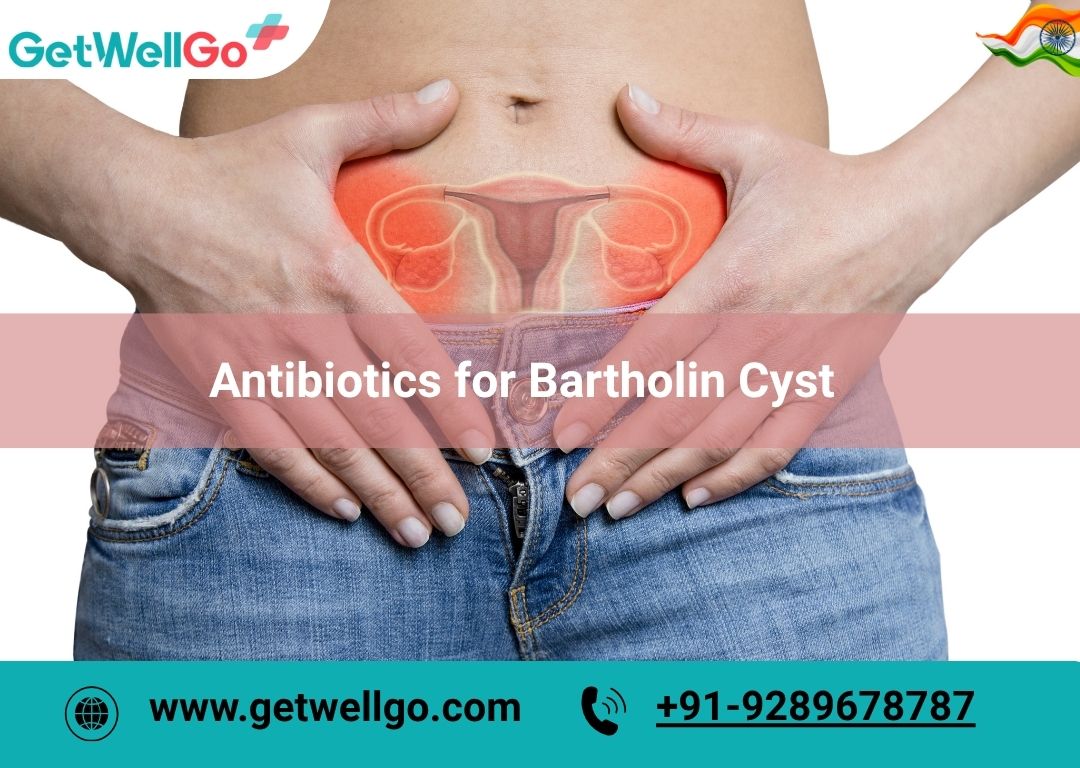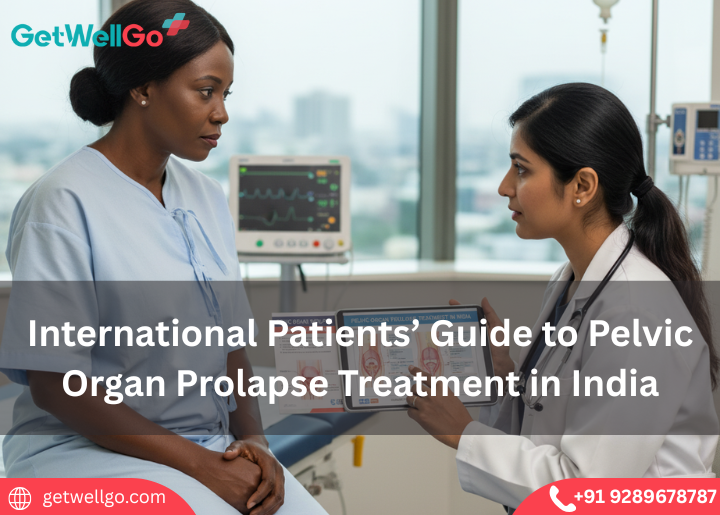.png)
World-Class Umbilical Artery Catheterization Services for Your Newborn
Choose GetWellGo for advanced umbilical artery catheterization. World-class newborn care trusted by international families for safety, comfort, and results.
Read MoreLearn when antibiotics are needed for Bartholin cysts, their role in treatment, and how GetWellGo supports international patients with expert care.

Category
GynecologyPublished By
GetWellGo TeamUpdated on
07-Jul-2025Antibiotics for a Bartholin cyst are generally unnecessary unless the cyst is infected (creating a Bartholin abscess). If that occurs, antibiotics are then used to cover the infection with drainage methods such as incision and drainage or placement of a Word catheter.
Treatment is usually directed at polymicrobial organisms, including anaerobes. Common options include:
Trimethoprim-Sulfamethoxazole (TMP-SMX)
Amoxicillin-Clavulanic Acid
Clindamycin
Metronidazole (combination)
Doxycycline (combination)
Best antibiotics for a Bartholin cyst vary with whether the cyst is infected or not:
If the Bartholin Cyst is Not Infected (No Abscess):
If the Bartholin Cyst is Infected (Bartholin Abscess):
Antibiotics can be indicated after incision and drainage, particularly if there is:
Amoxicillin-Clavulanate (Augmentin)
Trimethoprim-Sulfamethoxazole (Bactrim DS)
Clindamycin
Metronidazole + Doxycycline
For a Bartholin cyst abscess, antibiotics are usually administered in conjunction with drainage (e.g., incision and drainage or Word catheter placement). The infection is typically polymicrobial, with aerobic and anaerobic bacteria — including skin flora and sexually transmitted diseases such as gonorrhea and chlamydia in some infections.
Amoxicillin-Clavulanate (Augmentin)
Trimethoprim-Sulfamethoxazole (TMP-SMX, Bactrim DS)
Clindamycin (for penicillin allergy)
Metronidazole + Doxycycline
When Antibiotics Are Indicated:
Bartholin Cyst Drainage and Antibiotics: Complete Guide
If a Bartholin cyst becomes infected, it then turns into a Bartholin abscess that needs both drainage and occasionally antibiotics. Below is a simple explanation:
A. Incision and Drainage (I&D)
B. Word Catheter Insertion
C. Marsupialization
When Are Antibiotics Needed?
Antibiotics are not always necessary, but are advised if:
Treatment for a Bartholin cyst varies with whether the cyst is infected, painful, or recurrent. Below is a straightforward comparison between antibiotics and surgery and when each is utilized:
When to Use Antibiotics
Antibiotics are reserved only when the Bartholin cyst becomes infected — i.e., develops into a Bartholin abscess.
Use antibiotics if:
When Surgery or Drainage Is Indicated
Surgery is typically necessary when:
Incision and Drainage (I&D)
Word Catheter Placement
Marsupialization
Bartholin Gland Excision
Here is a simple Bartholin cyst home remedies vs. antibiotics comparison so you understand when each should be used and how they work:
Bartholin Cyst Home Remedies
Home remedies are ideal for small, non-infected, painless cysts.
When to Use:
Home Remedies That Work:
Sitz Baths
Warm Compress
Tea Tree Oil (diluted)
Aloe Vera Gel
Turmeric Paste
Bartholin Cyst Antibiotics
Antibiotics are only required if the cyst becomes infected and develops into a Bartholin abscess.
When to Use:
If your recurring Bartholin cyst occurs despite antibiotics, then the root cause of the drainage issue is not fixed. Antibiotics cure infection but do not remove the cyst nor repair the occluded duct, which leads to recurrence.
Why a Bartholin Cyst Returns After Antibiotics?
Yes, Bartholin cysts can be treated without antibiotics — particularly if the cyst is not infected (i.e., not an abscess). Here's a complete guide to Bartholin cyst treatment without antibiotics, including when it's safe and what you can do:
When You Can Treat a Bartholin Cyst Without Antibiotics
You do not need antibiotics if:
Bartholin Cyst Treatment Without Antibiotics:
Warm Sitz Baths
Warm Compress
Hygiene and Lifestyle Advice
Natural Remedies (Optional Complementary Use)
GetWellGo is regarded as a leading supplier of healthcare services. We help our foreign clients choose the best treatment locations that suit their needs both financially and medically.
We offer:
.png)
Choose GetWellGo for advanced umbilical artery catheterization. World-class newborn care trusted by international families for safety, comfort, and results.
Read More
Vaginal dilatation care in India helps global patients restore health and confidence. Expert gynecologists, modern techniques, and affordable care ensure safe and effective treatment.
Read More
Discover Care with GetWellGo: Affordable diagnostic laparoscopy in India for international patients. Expert care, advanced tech & seamless support.
Read More
GetWellGo helps international patients access top pelvic organ prolapse treatment in India with expert care, advanced surgery & complete support.
Read More
Struggling with recurrent UTIs? GetWellGo helps international patients access advanced urinary tract infection treatments in India with trusted specialists.
Read More
Choose India for ovarian cystectomy—safe, skilled surgeons, and affordable costs. GetWellGo ensures global patients the best medical journey.
Read More
World-class PCOS treatment in India with GetWellGo. Affordable care, advanced medical expertise, and full support for international patients.
Read More
Dreaming of a family? Explore safe, affordable Intrauterine Insemination (IUI) treatment in India with GetWellGo, trusted by international patients.
Read More
Myomectomy surgery in India provides advanced, safe, and affordable solutions for fibroid removal. Top hospitals ensure expert care, modern techniques, and faster recovery for women’s health.
Read More.png)
GetWellGo connects international patients with India’s top hospitals for laparoscopic hysterectomy. Expert care & advanced surgery at affordable costs.
Read More
Safe, confidential abortion centre in India for international patients. GetWellGo ensures expert medical care with complete privacy and legal support.
Read More
Learn about hymenoplasty treatment, ideal candidates, and procedure details. Get trusted, confidential care at GetWellGo for international patients.
Read MoreFill the form below to get in touch with our experts.
Please fill in your details below and our experts will get back to you.